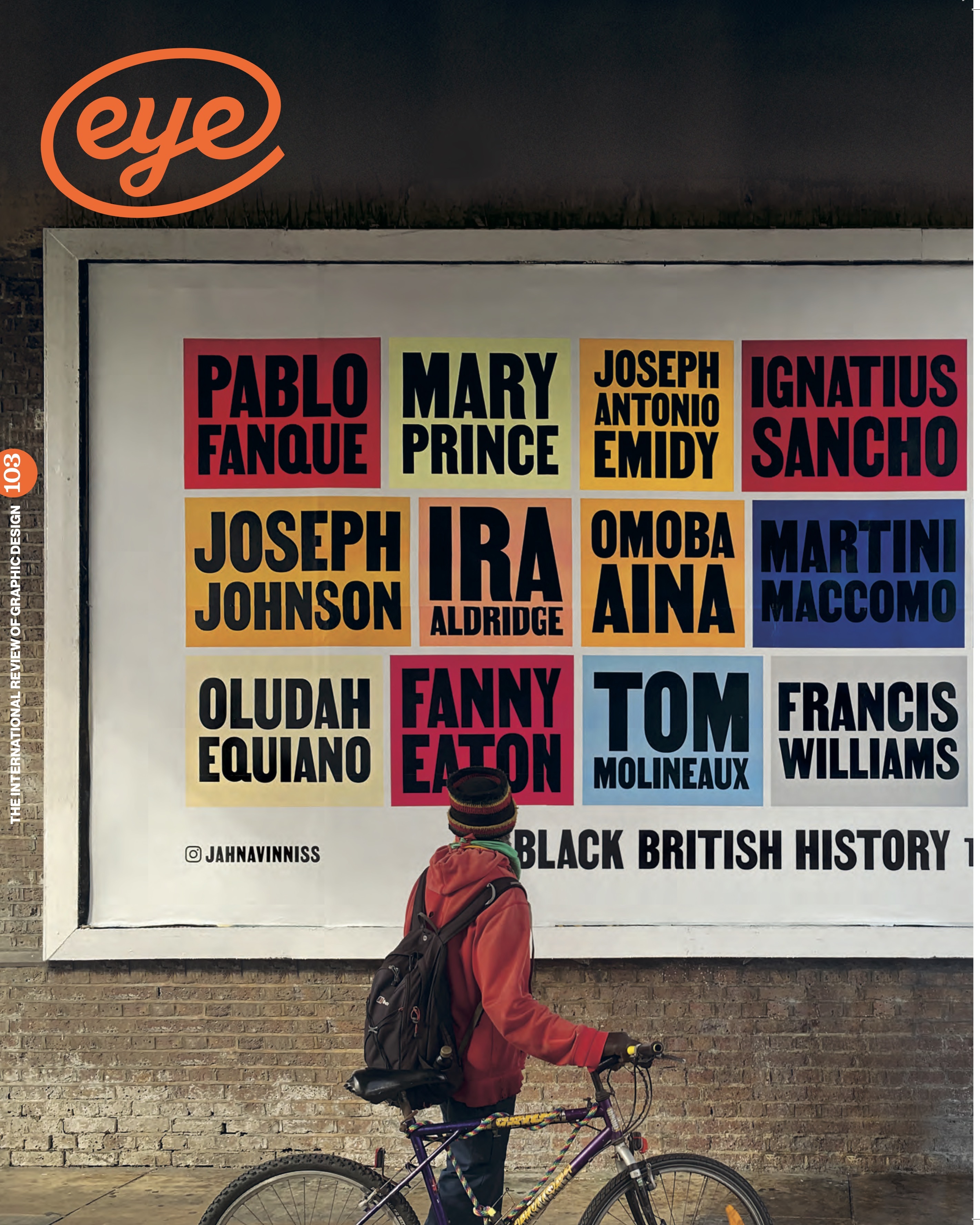Summer 2022
Witness
Lucinda Rogers’ reportage drawings captured the urgent activism and human drama that surrounded Cop26, the 2021 Glasgow climate summit. By John L. Walters. Portrait by Jillian Edelstein
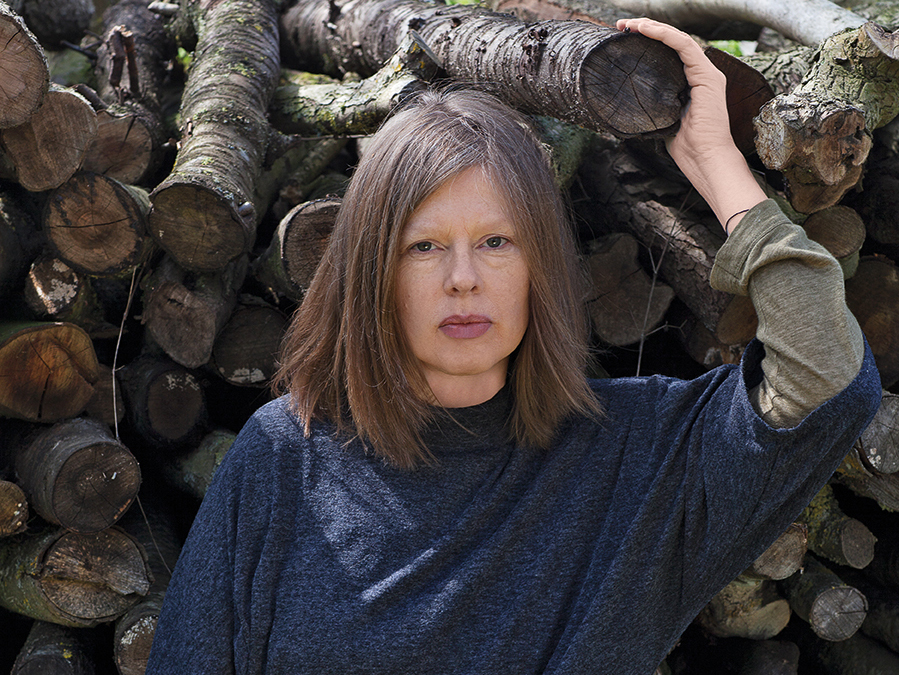
Late last year, Lucinda Rogers went to Glasgow in Scotland for Cop26*, the international climate change conference and drew all day, every day, for two weeks. From her first impressions of Glasgow railway station, with its bustling passengers and big clock dominated by Cop26 banners, to her elegiac drawings as the whole circus closed down, she captured the mood of a city caught up in the urgency of a global debate.
Though she did not have a pass to go inside the main conference buildings, this was no deterrent to making a vivid record of what Rogers perceived to be a giant but ‘essentially abstract’ event. By acting on her journalistic instincts for a story, following leads from locals, insiders and activists, she set up to draw around the periphery, assembling memorable and pointed images, many of which are featured in Around the edge of COP26, published soon after her return. This slim, saddle-stitched volume summarises her views of the event and the climate emergency in pictures and words; the inside back cover contains an ‘Information and action’ list of resources and campaigning groups that she urges readers to follow up.
This drawing of a man with a plywood sign saying ‘It’s Capitalism Ya Eejits’ appeared on the Financial Times’s op-ed page. Top. Portrait of Lucinda Rogers by Jillian Edelstein.
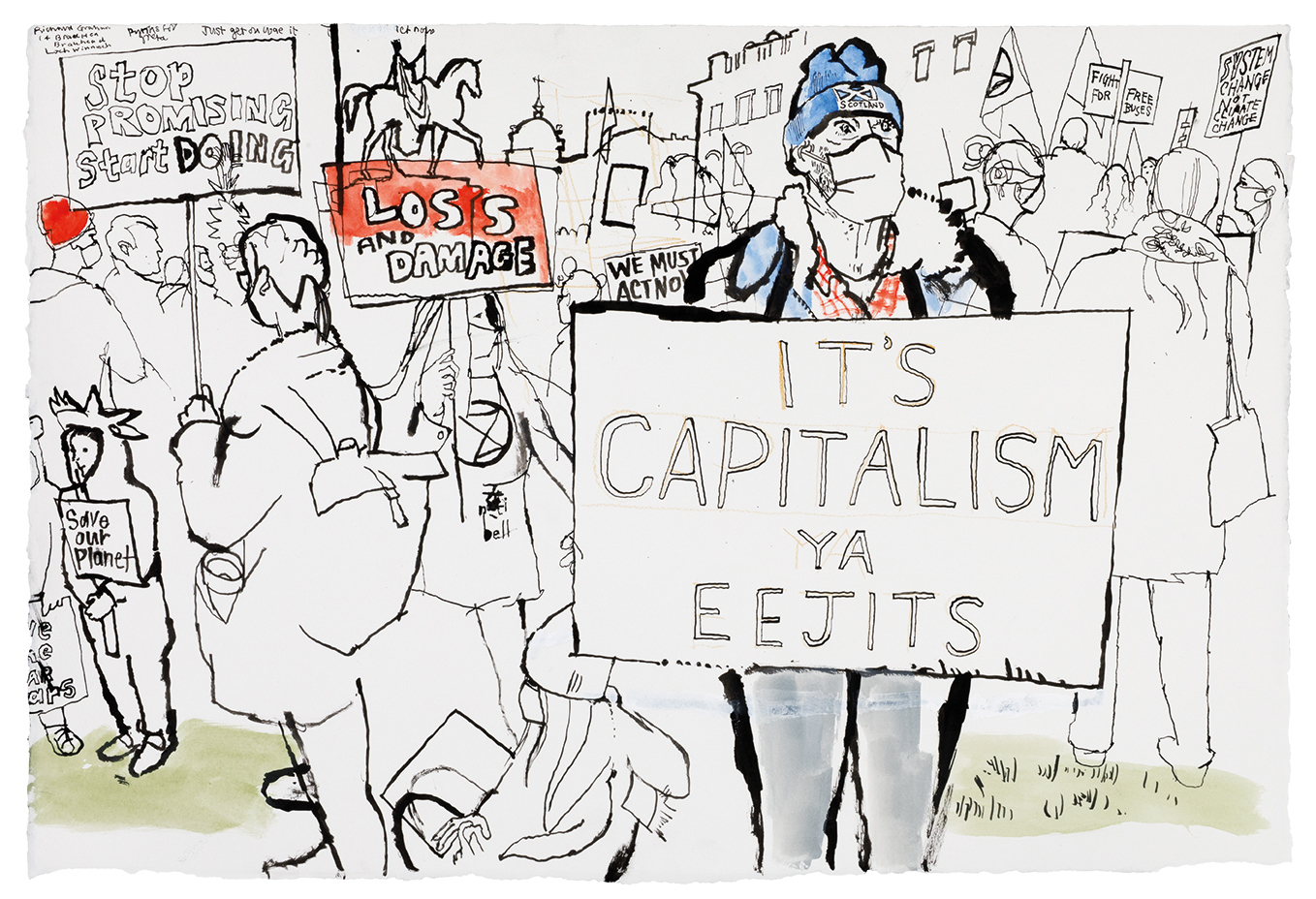
Rogers’ drawings were also part of the coverage given to Cop26 by the UK newspaper Financial Times (FT). Kevin Wilson, the paper’s head of design, commissioned Rogers to send drawings from the Scottish city, and her humane, critical appraisals became a vital element of the FT’s online and printed reports.
The pictures show the many characters – delegates, protesters, representatives of indigenous peoples in Ecuador and Indonesia, service workers, security staff, police, passers-by – caught up in the pageant of Cop26.
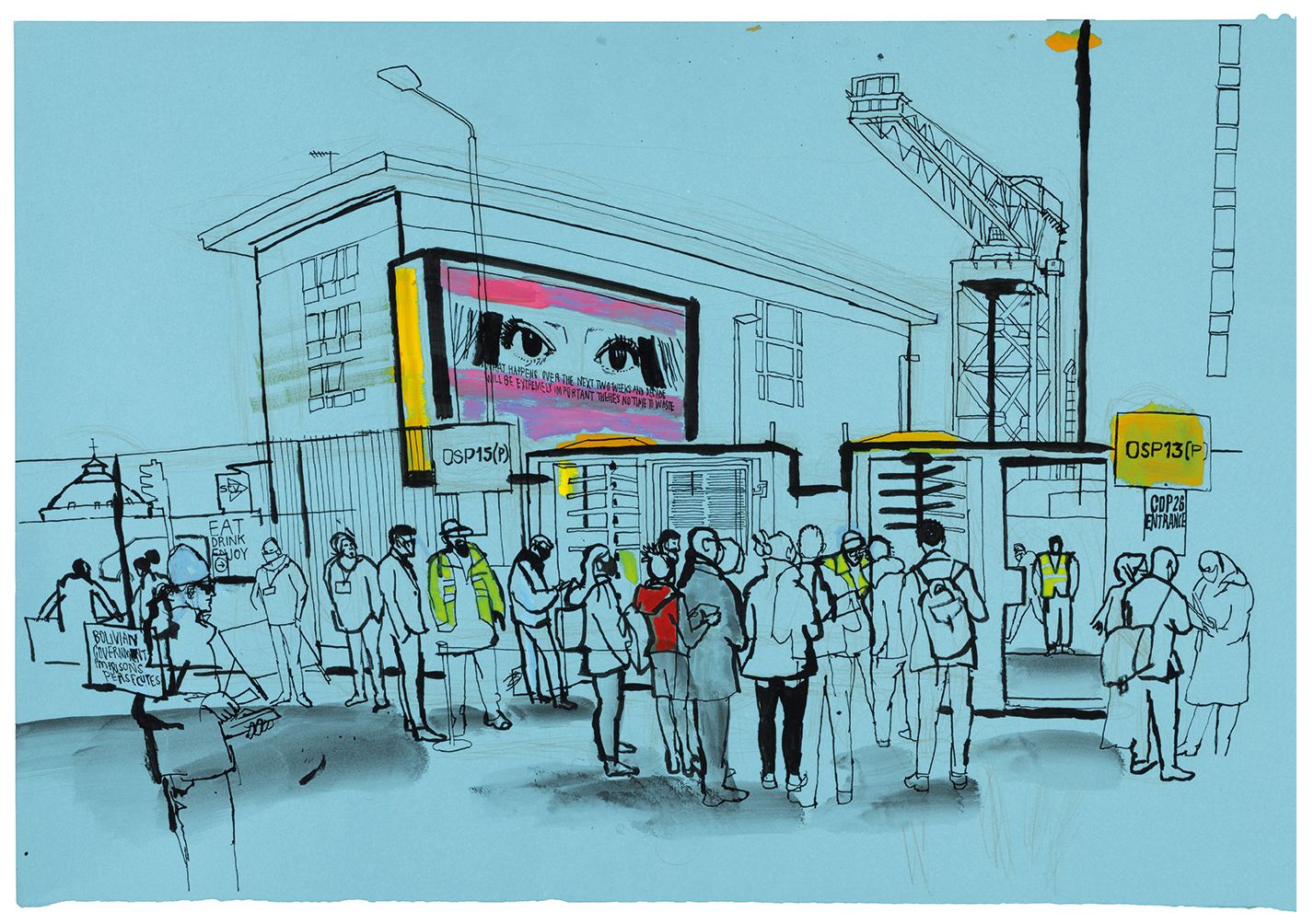
They inhabit a documentary landscape that is recognisably Rogers’, identified by the way she draws with compassion and objectivity. The Gentle Author, the prolific Spitalfields Life blogger, has written: ‘Lucinda’s work is closer to cinema than photography.’
As she gets to work with her drawing materials – ink, dip pens, brushes, paper and coloured pencils – protected from the cold with a thick coat and woolly hat, Rogers scrutinises all who pass in front of her, though her sympathies are clearly with the protesters. Some images from inside the conference hall, such as ‘A Cop26 sponsor’s booth in the Green Zone’, have a surreal bathos – one sponsor makes Dettol and Air Wick among many other products. ‘There was a lot of greenwash,’ said Rogers at Eye’s ‘Type Tuesday’ on 8 March 2022. ‘The inference was that we can just carry on … and buy their products and play their computer games.’
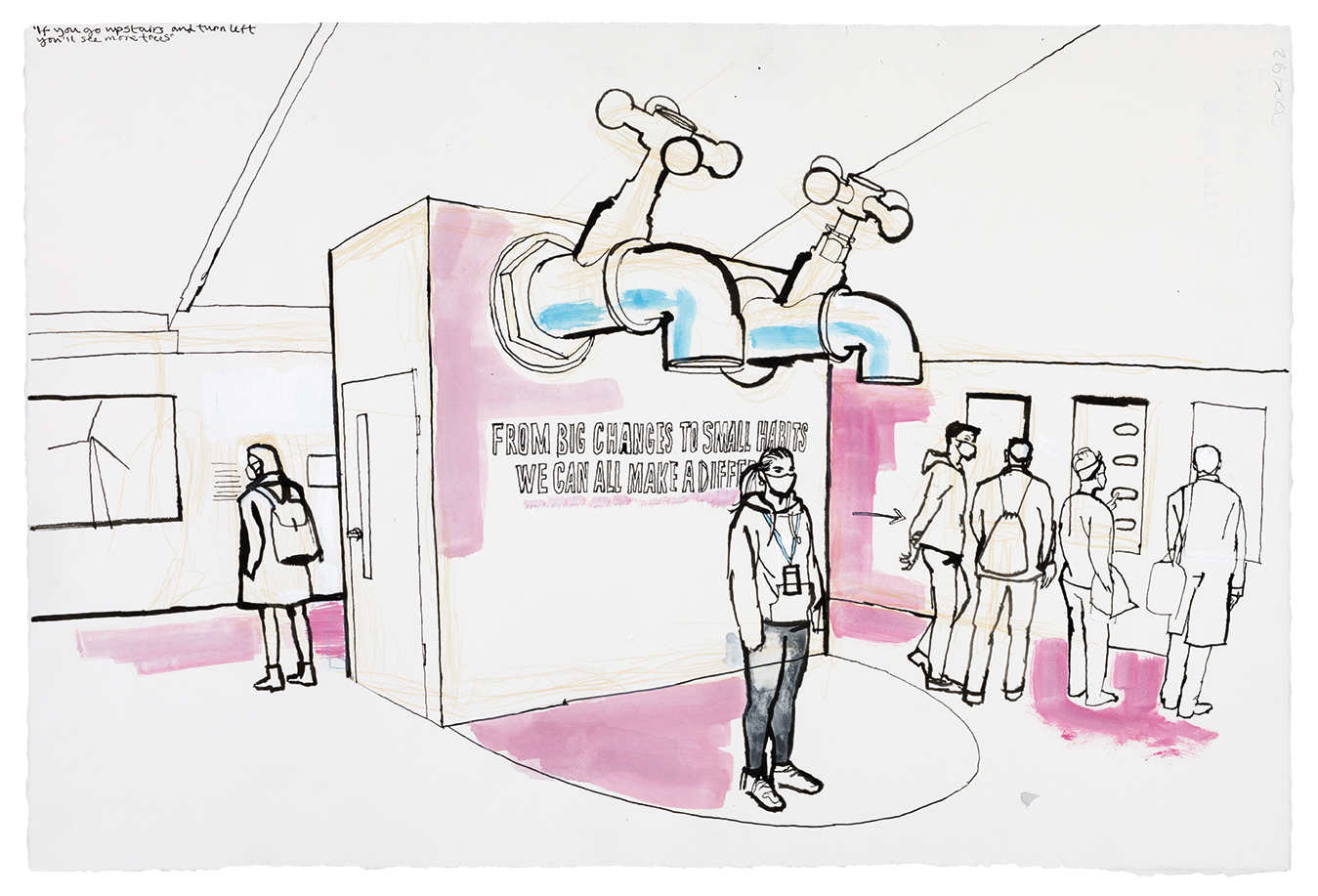
An enduring challenge for all reportage illustrators is time, or rather the lack of time they need to draw everything they wish to record. A big demo, packed with people on the move, is particularly hard; sometimes Rogers renders a crowd of banner-carrying figures by combining people from more than one location. Perhaps her most striking demo image is dominated by the arched eyebrows and forthright stare of a Covid-masked protester in a ‘Scotland’ beanie. His placard reads: ‘It’s capitalism ya eejits.’
Rogers’ drawing of delegates by the turnstile entrance gave the FT’s live blog an extra charge, an immediacy that matched the coverage by journalists such as Adrienne Klasa and Emiliya Mychasuk. Rogers’ quick pen outlines the movement of people as they dig passes and IDs from their pockets and open up bags for security checks. On one occasion, when going into the Green Zone, which Rogers describes ‘a sort of conference-lite exhibition space open to the public’, she was stopped and quizzed for carrying what a police officer referred to as ‘sharps’ – her pen nibs.
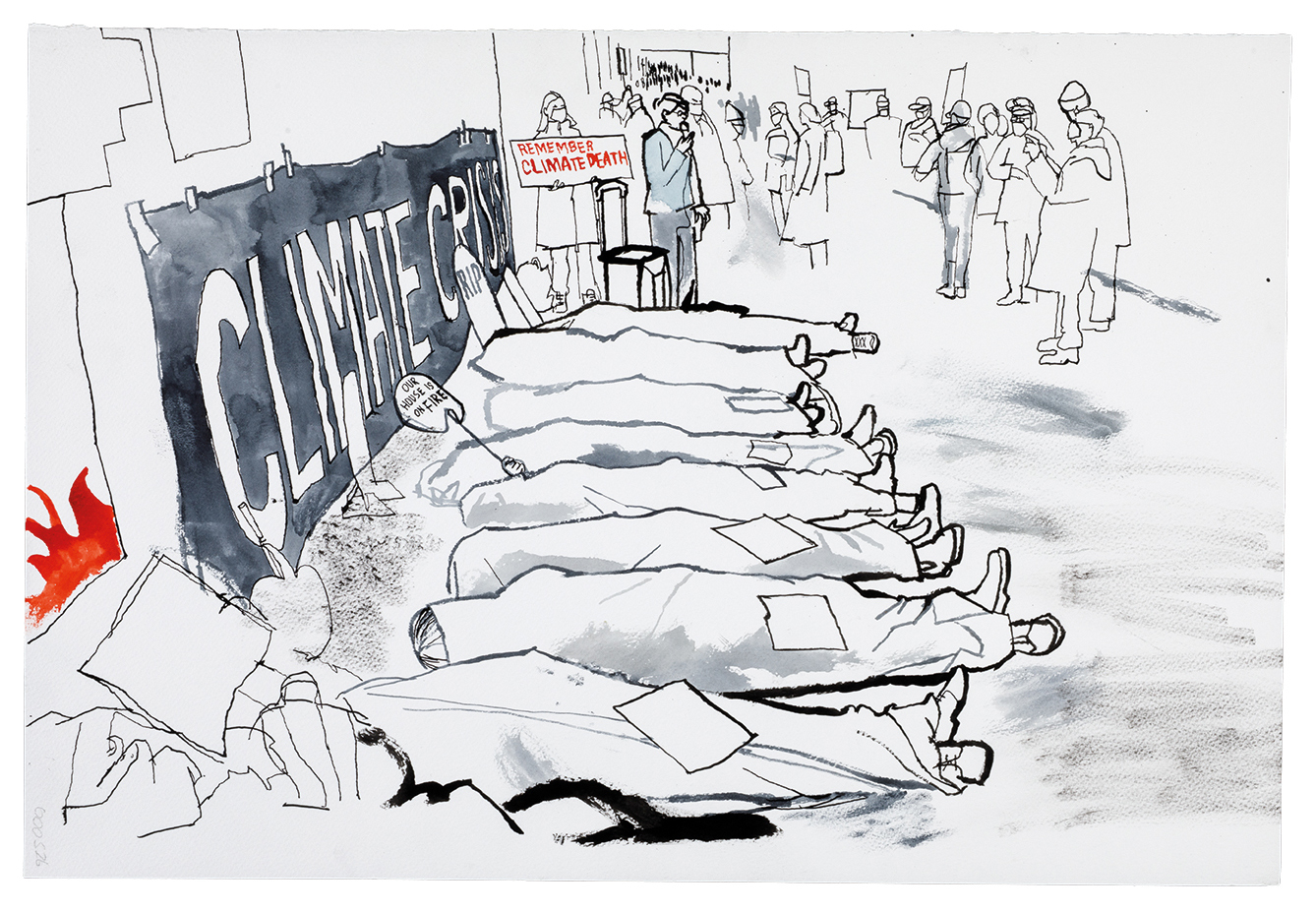
The drawings take on a different mood when Rogers has enough time to capture a subject’s spirit, as in her portrait of a ‘woman wearing a photo of her grandson James’, on one of the protest demos. Rogers’ colourful image of a singer wearing The Coat of Hopes has an intense majesty. The Coat is a participatory project initiated by Lewes artist Barbara Keal. Over the course of a nine-week, 500-mile pilgrimage from Newhaven to Glasgow, scores of people stitched embroidered squares that represented their ‘hopes’, attaching them to this remarkable artefact. At Cop26, explains Rogers, ‘they wanted people to put on the Coat and feel the weight of the hopes.’
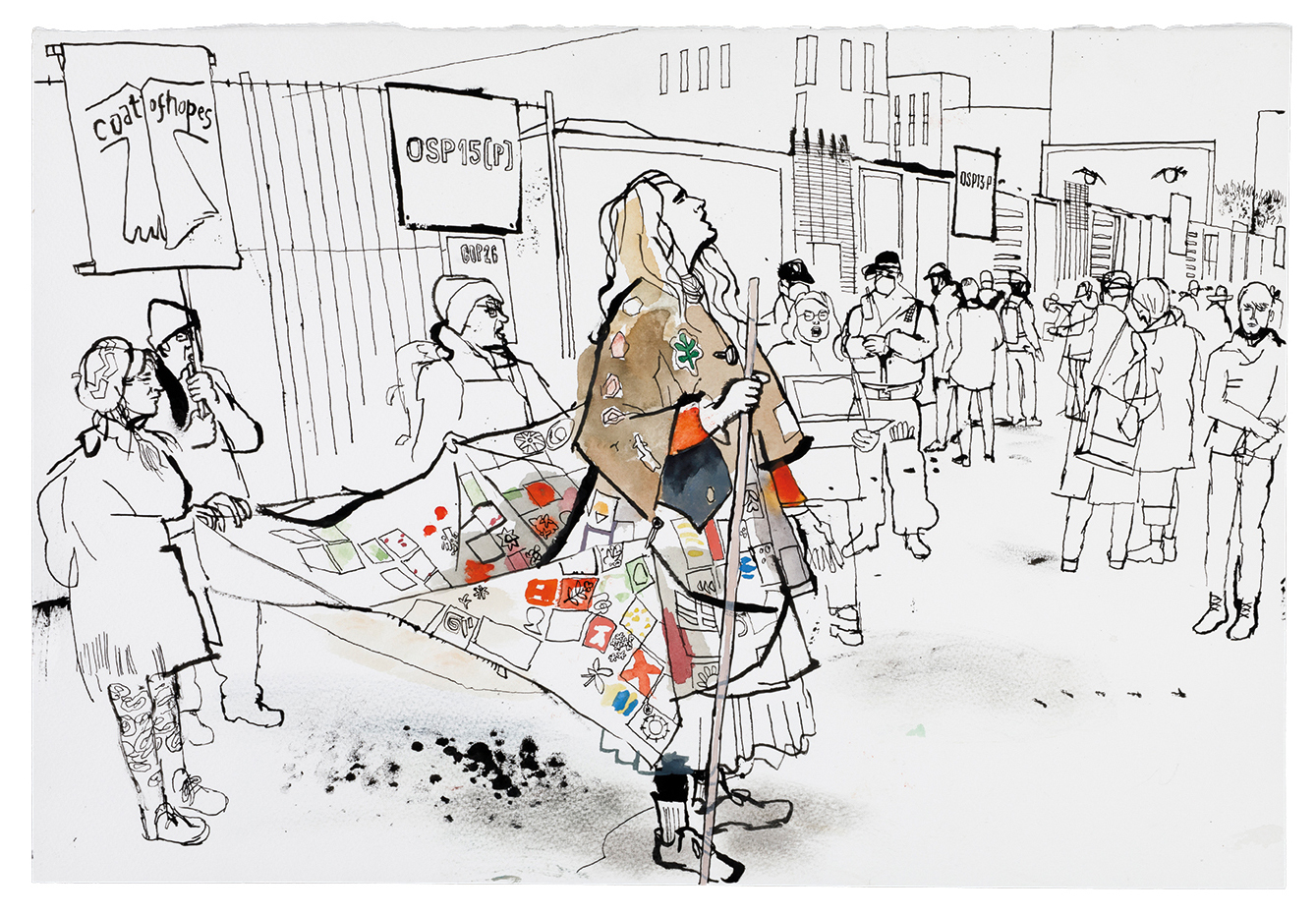
The FT’s Wilson has known and admired Rogers’ work for some time. Reportage gave him ‘another way of showing the news visually,’ he explained at the same Type Tuesday event. Illustration, he says, can have ‘the energy of news photography but perhaps a greater sense of place and people.’ The FT had launched a ‘climate hub’ in February 2021, announcing that ‘Climate change is one of the big economic stories of our time and its impact extends across politics, business and finance.’
The paper’s rolling deadlines produced two kinds of reportage: ‘live drawings’ in black and white, and more finished artwork, to which Rogers added colour andother final touches. She photographed the artworks with her iPhone camera, on one occasion using someone else’s when her own phone ran out of battery. Wilson’s team cleaned up the image in Photoshop for repro and print. ‘What we were getting was a flavour that the rest of our coverage didn’t have, and that our competitors didn’t have, so it really helped,’ said Wilson. ‘We had got out of the habit of using reportage, and this was a reminder of what it could do.’
Glasgow was also the setting for the People’s Summit for Climate Justice, an alternative conference organised by Cop26 Coalition, a big group of NGOs, unions, grassroots campaigns, faith groups and more, who held a ‘Tribunal’ intended to hold to account the United Nations Framework Convention on Climate Change (UNFCCC). After four hours of evidence, Cop26 Coalition’s jury found it guilty on six counts, including failure to address the root causes of climate change, and failure to regulate corporations.
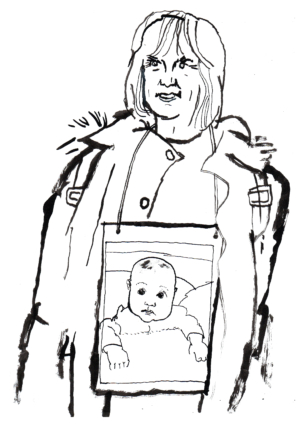
Rogers wrote that ‘above all, the massive, noisy Global Day of Action march stopped everything in its tracks, and I felt a great sense of common purpose in the air.’ Her drawings show the energy and confusion and commitment that stems from being around people who want change. Though protest actions can seem small and futile in the face of big business and ‘politics as usual’, Rogers’ drawings help to enlarge these gestures, which reflect the fragility of the planet we all share. And Rogers’ inky renderings of protest banners in Around the edge of COP26 serve to amplify the cries of those who are so often ignored: ‘Stop Climate Crime’; ‘Empower Women Through Education and Reproductive Rights’; ‘We Climb this Mountain Together’; and ‘Net Zero is Not Zero.’
John L. Walters, editor of Eye, London
First published in Eye no. 103 vol. 26, 2022
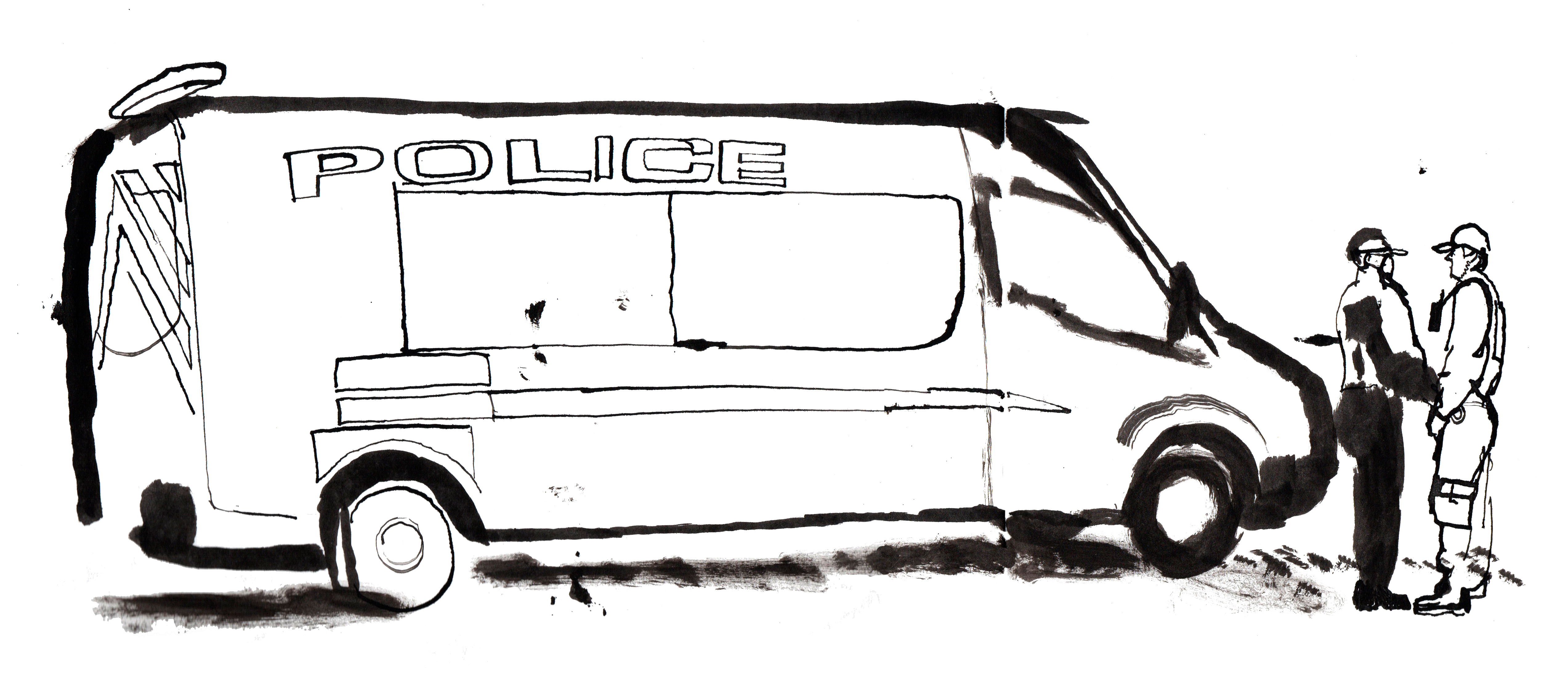
Eye is the world’s most beautiful and collectable graphic design journal, published for professional designers, students and anyone interested in critical, informed writing about graphic design and visual culture. It is available from all good design bookshops and online at the Eye shop, where you can buy subscriptions and single issues.

